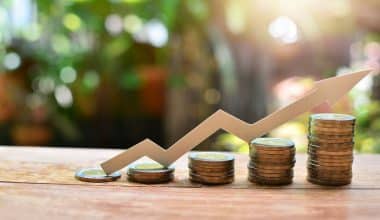Depreciation is one of the methods in accounting that explores an asset’s original cost or value, what it might be worth at the end of its life cycle, and how the value of the asset changes over time. This invariably means, the decrease in an asset’s value over time as a result of usage, wear and tear, or datedness. Rather than devaluing an item by writing it off as a deduction, depreciation acknowledges the item’s worth over time and how it changes with use. Companies consider various methods and factors in order to calculate depreciation. And when calculating, they employ different methods. Hence, this post will outline the various methods for calculating depreciation and how to determine the value of an asset. It also elaborates on other depreciation methods such as accelerated depreciation methods, GAAP methods, and MACRS methods.
What Is Depreciation?
Depreciation is the measurement of an asset’s value deterioration over time, use, or obsolescence. In essence, it is the decrease in the value of fixed assets as a result of their use, the changes that come with time, or aging.
In the United States, accountants must calculate and report depreciation on financial statements using generally accepted accounting principles (GAAP). GAAP is a set of financial reporting accounting rules and standards that accountants widely accept. Accounting experts can employ various different allowed methods of depreciation according to GAAP requirements.
In addition, depreciation is one expense that does not require any cash outflow. As a result, depreciation as an expense is distinct from all other types of expenses.
Regardless, a corporation takes into account several criteria when calculating depreciation. The method of depreciation is one such factor. As a result, oragnizations employ multiple depreciation methodologies to calculate depreciation.
Let’s see the several depreciation methods
Depreciation Methods in Accounting
There are four basic methods to calculate depreciation in accounting, which include straight-line, double-declining balance, units of production, and the sum of years’ digits. Let’s discuss them in detail.
#1. Straightline Depreciation
The straight-line method is commonly used to calculate a period’s average fall in value. This is the most frequent and easy approach for calculating depreciation. The straight-line approach is used to depreciate assets like vehicles, office furniture, computers, and office buildings. You’ll need to know the asset’s depreciable base (its original cost) and salvage value (its value at the end of its useful life) to calculate the straight-line method.
The following is the formula for annual depreciation using the straight-line method:
Depreciation Cost = (Initial Cost of an asset – Salvage Value)/Useful life of an asset
Where Initial cost = Original cost of purchase
Salvage value= The value of the asset at the end of its useful life
Useful Life= represents the expected number of years a company can use an asset.
Let’s consider the following example
Say XYZ transport company purchases a new transport vehicle for $50,000. The salvage value of that vehicle is $10,000 and its useful life is 9 years. What will the depreciation cost be?
Depreciation Cost = (Initial Cost of an asset – Salvage Value)/Useful life of an asset
$50,000 – $10,000 / 9 years
$40, 000 / 9yrs
XYZ’s annual depreciation costs will be $4,444 over the lifecycle of the asset
#2. Double Declining Balance Depreciation
The declining balance method is a sort of accelerated depreciation that allows you to write off depreciation costs early in the asset’s life and reduce your tax liability. Fixed assets decline more quickly under this technique than they would if they were depreciated evenly throughout their entire expected useful life. When an item is predicted to lose more value or have more utility in the future, this strategy is frequently applied. It also aids in the realization of a higher gain when the asset is sold. For more rigorous depreciation and early cost management, some organizations may employ the double-declining balance equation. When matched to the expected salvage value, this strategy results in an overly depreciated asset at the end of its lifecycle.
The following is the formula for annual depreciation using the double decline balance method
Depreciation cost = 2 x (Initial Cost of an asset – Salvage Value) /Useful life of an asset
Let’s see an example:
Formula 1: Using the above example of the transport company
Depreciation Cost = 2 x (Initial Cost of an asset – Salvage Value)/Useful life of an asset
2 x ($50,000 – $10,000) / 9 years
2 x $40, 000 / 9yrs
XYZ depreciation costs will be $8,888 in the first year, then double the price in the second year and goes on in the same manner
#3. Units of Production Depreciation
A business may adopt this strategy depending on how the machine produces in a manufacturing industry. Larger production entails higher expenses, so the depreciation approach is appropriate in this scenario. It’s most useful when an asset’s worth is determined by how many units it generates or how much it’s used rather than by how long it lasts.
Divide the asset’s worth (after removing its residual value) by its life in units to calculate depreciation.
The following is the formula for units of production method
Depreciation Cost= (Asset cost – Salvage value) /Estimated units over asset’s life x actual units made
Example:
A juice company has a shrinking machine worth $280,000 and a residual value of $6,000 and expects to shrink 150,000 packs of juice in its lifetime. They calculate depreciation by taking the value of the machine minus the residual value ($280,000 – $6,000) and dividing it by its lifetime per unit ($268,000 divided by 150,000 = $1.83 per unit).
#4. Sum of Years Digits Depreciation
The Sum of Years’ Digits Method is another accelerated depreciation approach. Depreciation is recognized at a faster pace with this strategy. As a result, under this method, the depreciable value of an asset is charged to a fraction over multiple accounting periods. This fraction is the ratio of an asset’s residual useful life in a certain time to the sum of the years’ digits. As a result, this fraction implies that in the first year, the capital blocked or benefit obtained from the asset is the highest.
This means that as an asset approaches the end of its useful life, the benefit derived from it decreases. That is because there’s been no recovery in capital. Until then, the largest amount of depreciation is allocated in the first year. This approach is suitable for organizations with assets that will decrease more in value in the initial years and that want to record more equally distributed write-offs than those computed using the declining balance method.
The following is the formula for the depreciation method in SYD
Depreciation cost = (remaining lifespan/SYD) x depreciable cost
Where depreciable cost = (asset cost – salvage value), and SYD = (n(n +1))/2 (where n = useful life of an asset)
Lets see the an example:
Using the instance of the same transport company
Depreciation cost = (remaining lifespan/SYD) x depreciable cost
{9yrs / [9(9+1)] /2} x ($50,000 – $10,000)
{9yrs /45} x $40,000
0.2 x $40,000
The first-year depreciation cost will be $8,000 after which the second year will be $7,111 {8yrs /45} x $40,000. It continues to go down in subsequent years
How to Calculate Depreciation Methods
You can calculate depreciation methods in a variety of ways. Firstly, an organization must have a knowledge of the cost, useful life, and a salvage value of an asset. The company can then determine depreciation using a formula that is appropriate for its accounting needs, asset type, asset lifespan, or unit production.
#1. Assets Cost
Historical cost is another name for the asset’s cost. This includes the fixed asset’s sell price as well as any additional costs necessary to get the item up and running. Shipment, installation charges, commission, insurance, and so on are all-inclusive in these costs.
#2. Salvage Value
This refers to the expected value of an asset or an item at the end of its useful life. You calculate this value by subtracting the cost of selling an item from the purchase price of the item.
#3. Useful Life
The useful life of an asset means the commercial or economic life of the assets. The physical life and appearance of an asset don’t matter when determining its useful life because the asset may still be in good physical condition and shape after a few years of use, but it is still not acceptable or useful in production.
Accelerated Depreciation Methods
One of the types of depreciation methods useful in accounting or income tax purposes that allows for higher depreciation expenses in the asset’s early years of life is accelerated depreciation. Depreciation charges will be larger in the first few years and reduce as the asset ages, according to accelerated depreciation methods such as double-declining balance (DDB). This differs from straight-line depreciation, which divides the cost evenly across the asset’s lifetime.
The use of accelerated depreciation methods has financial consequences. Expenses are higher in earlier periods than in later ones due to the acceleration of depreciation. Corporations use these methods for tax purposes as an accelerated depreciation approach will lead to a deferral of taxes due because income is smaller in earlier periods.
However, because accelerated depreciation reduces net profits in the short term, public corporations seek to avoid it.
The two types of accelerated depreciation methods include:
- Double-Declining Balance Method
- Sum of the Years’ Digits (SYD) method
GAAP Depreciation Methods
GAAP depreciation methods are a set of rules, concepts, and processes that policy boards provide to accountants in order to aid regularity, adherence, and assessment. Depreciation estimates and calculations might be complicated, but generally accepted accounting principles provide a list of rules to follow. Both public and private organizations employ depreciation methods that follow generally accepted accounting principles (GAAP) to price their asset and calculate the value of the asset.
However, several organizations have switched to using the Overseas Financial Reporting Standards to be compliant with their international suppliers and customers, despite the fact that GAAP depreciation norms are primarily centered on American corporations. Nonetheless, GAAP is the bedrock of accounting rules in the United States, and it is essential when a company delivers its financial reports. We have mentioned and explained 4 common methods of GAAP depreciation earlier in this post.
MACRS Depreciation Methods
In the United States, the modified accelerated cost recovery system (MACRS) is a depreciation system that is utilized for tax purposes. The invested cost of an asset can be regained over a given period of time using MACRS depreciation. The MACRS methodology divides assets into depreciation categories with specific depreciation periods.
Two major MACRS deprecation systems exist. The general depreciation system (GDS) and alternative depreciation system (ADS). Different recovery intervals and depreciation procedures are of use in these two systems. GDS is useful most of the time, while, ADS can be useful in rare circumstances.
Most assets are depreciated using the modified accelerated cost recovery system (MACRS). MACRS provides faster depreciation over longer periods of time. Faster acceleration is advantageous since it allows individuals and corporations to deduct more during the first few years of an asset’s life and later less.
Computer equipment, office furniture, autos, fences, farm buildings, racehorses, and other assets can all depreciate using the MACRS methods. But you can not apply MACRS depreciation to intangible properties
Types of MACRS Depreciation
#1. General Depreciation System
The modified accelerated cost recovery system (MACRS) is the most commonly used method for computing depreciation.Personal property It depreciates using the decreasing balance approach in a general depreciation system. The general depreciation system (GDS) enables taxpayers to accelerate the rate of depreciation of an asset by recording a higher depreciation amount during the asset’s initial years of useful life. The GDS is ideal for assets that depreciate rapidly, such as laptops and other electronics.
#2. Alternative Deprecation System
The alternative depreciation system allows taxpayers to depreciate an asset for a longer period of time. ADS is necessary in some situations, including property engaged in a farming activity, tax-exempt assets, and property used outside the United States.
Bottom Line
Finally, the depreciation method is critical for a business’s assets. Rather than discarding assets that have been inactive for a long time, consider using the depreciation approach to avoid completely missing out on what could be worth a little more.
FAQs
What is Depreciation?
It is the decrease of the value of fixed assets as a result of their use, the changes that come with time, or aging. The several methods include Accelerated depreciation methods, GAAP, MACRS, etc.
Which method is best for depreciation?
The straight-line method is the most frequent and easy approach for calculating depreciation.
Why straight line method is used?
The simplest and easiest of methods to calculate depreciation is to use a straight line. It is particularly effective when the value of an asset diminishes at a consistent rate over time.
What is annuity method of depreciation?
Using the annuity method involves calculating the rate of return on an asset like it is an investment. It applies frequently to assets with a high purchase price, a lengthy life, and a set (or at likely steady) rate of return.






